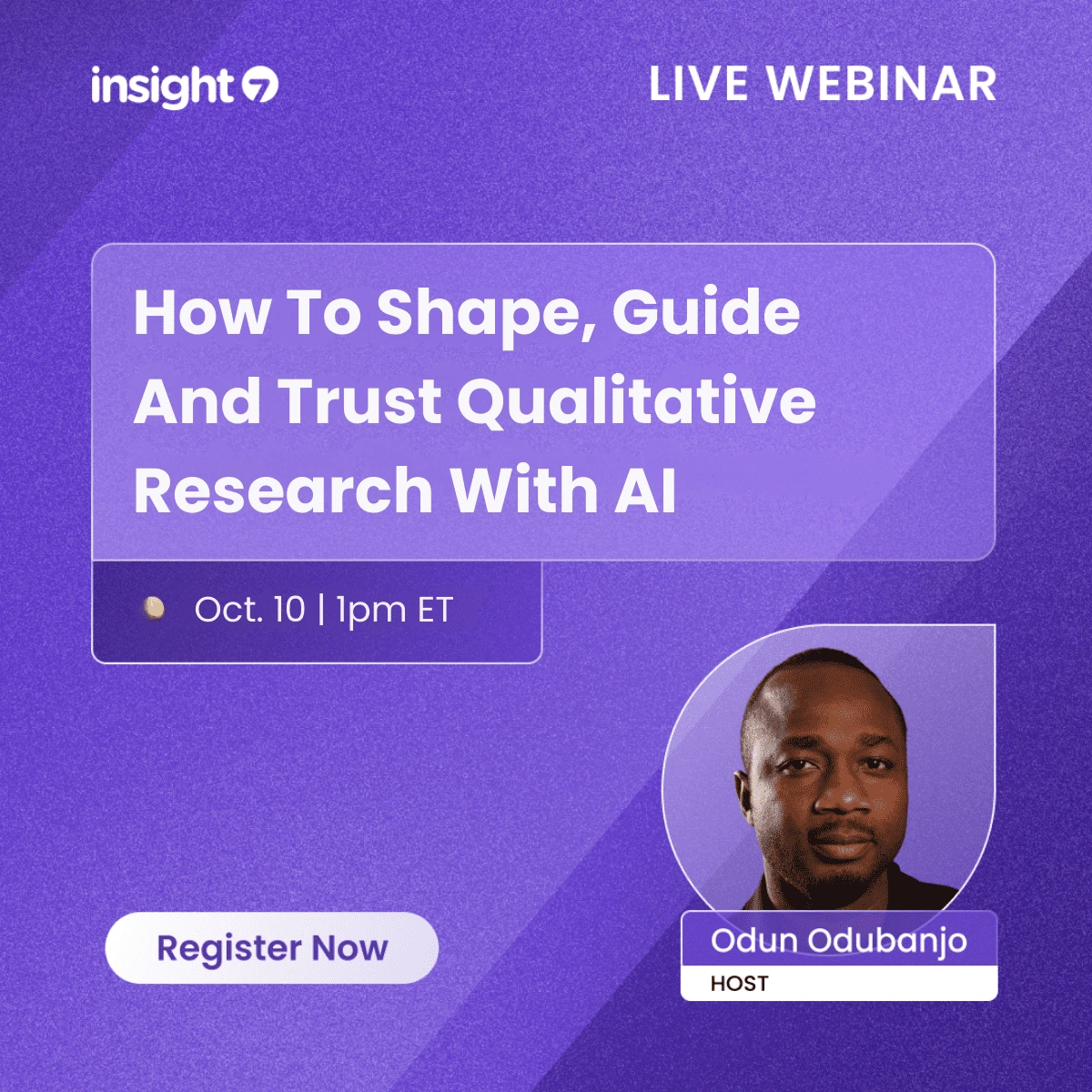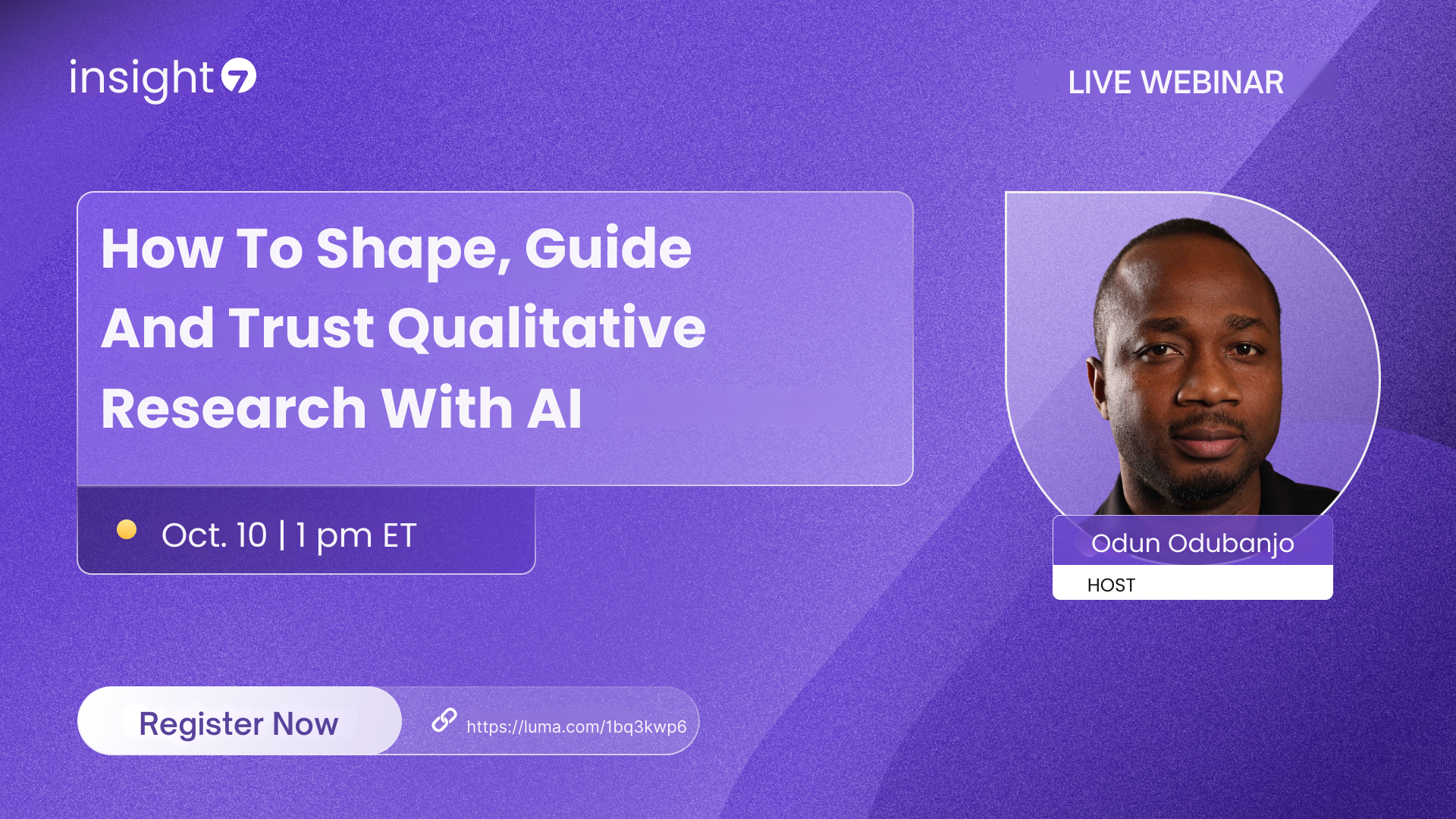Best AI tools for extracting insights from user experience interviews
-
Bella Williams
- 10 min read
UX Insight Extraction begins with understanding the nuances of user experience interviews. These interviews serve as a rich source of qualitative data, revealing users' needs, pain points, and aspirations. Through the right tools, businesses can transform these conversations into actionable insights that drive product improvements and enhance user satisfaction.
The process requires both skill and technology. Effective AI tools facilitate the extraction and analysis of key themes across multiple interviews, making it easier to identify trends and patterns. By utilizing these technologies, companies can democratize access to insights, ensuring that not only analysts but all team members can engage with the data effectively, ultimately leading to better decision-making and improved user experiences.
Generate visualizations from your qualitative data. At Scale.

The Importance of AI in UX Insight Extraction
AI plays a pivotal role in UX insight extraction, transforming qualitative data from user experience interviews into actionable insights. By harnessing advanced algorithms, AI tools can analyze large volumes of conversational data quickly, identifying core themes, pain points, and user desires with impressive accuracy. This enables businesses to recognize trends and make informed design decisions, ultimately enhancing user satisfaction and experience.
Moreover, AI improves the efficiency of UX analysis. Manual transcript review is time-consuming and often subjective, while AI can automate this process, pulling relevant insights seamlessly. With the ability to categorize user feedback into understandable segments, teams can focus their efforts on tackling critical issues revealed through analysis. As AI technology continues to evolve, its importance in UX insight extraction will only grow, enabling more innovative solutions to meet user needs effectively.
Transforming Qualitative Data into Actionable Insights
Transforming qualitative data into actionable insights involves several critical steps. This process begins with thorough data collection from user experience interviews, where rich, narrative feedback is gathered. Next, technology comes into play to systematically analyze this qualitative data to extract relevant themes and patterns. AI tools can assist in identifying the main pain points that users express, enabling teams to prioritize which issues to address first.
After compiling insights, the findings can be organized into reports that highlight the key themes and actionable recommendations. By summarizing the data and visualizing trends, stakeholders can effectively communicate insights across their organization. Ultimately, transforming qualitative data into actionable insights allows teams to make informed decisions, enhancing user experiences and driving product improvements. This process is essential for businesses aiming to stay competitive and responsive to user feedback.
Enhancing Efficiency and Accuracy in UX Analysis
Efficient UX analysis is vital for understanding user experiences and improving products. Enhancing this process ensures that insights gained from user interviews are both accurate and actionable. The advent of AI-powered tools plays a crucial role in this transformation, allowing teams to analyze vast amounts of qualitative data seamlessly and swiftly.
By utilizing advanced algorithms, these tools can identify patterns, pain points, and user sentiments, which might otherwise go unnoticed. This not only saves time but also reduces the potential for human error in interpreting findings. Furthermore, features like automated transcription and sentiment analysis enhance the overall accuracy of UX insight extraction. As businesses strive to deliver better user experiences, integrating AI tools into their analysis workflows becomes essential for fostering innovation and maintaining a competitive edge. With the right tools, organizations can effortlessly convert raw data into meaningful insights that drive strategic decisions.
Evaluate Performance on Customer Calls for Quality Assurance.
Top AI Tools for UX Insight Extraction
Top AI Tools for UX Insight Extraction comprises essential technologies that streamline the process of distilling valuable insights from user experience interviews. By utilizing these tools, businesses can convert qualitative data into actionable findings that inform design decisions. The right AI tools not only improve the quality of insights but also enhance the overall efficiency of the analysis process.
Among the leading AI tools, Grain stands out for its ability to transcribe and analyze interviews, providing clear visualizations of conversation dynamics. Otter.ai offers similar features but excels in collaboration, making it easy for teams to share insights quickly. Meanwhile, Scribe simplifies documenting user experiences, ensuring that every valuable piece of feedback is captured accurately. These tools make UX insight extraction accessible to all team members, allowing organizations to harness user feedback effectively.
Insight7: Leading the Way in User Experience Analysis
In an era where customer feedback drives business success, Insight7 emerges as a leader in UX Insight Extraction. Organizations face the challenge of navigating vast amounts of qualitative data from user experience interviews. Many struggle to transform this information into meaningful insights efficiently. This is where Insight7 offers revolutionary solutions tailored to meet these needs.
The platform simplifies the process of analyzing and understanding user experiences by providing a self-service interface that empowers businesses to extract insights at scale. Key problems like slow manual analysis, scattered data, and inefficient collaboration are efficiently addressed, allowing companies to focus on strategic decision-making. By combining advanced technology with user-centric design, Insight7 enhances the ability of organizations to turn customer conversations into actionable data, setting them apart from competitors. In the landscape of user experience analysis, organizations can trust Insight7 to provide the insights they need to thrive.
Other Noteworthy AI Tools
In addition to the popular tools discussed earlier, several other noteworthy AI tools are making significant contributions to UX insight extraction. For instance, tools like Grain, Otter.ai, and Scribe can enhance the overall analysis process. Each of these tools brings unique features that cater to specific needs in extracting valuable insights from user interviews.
Grain stands out for its ability to capture and transcribe audio from interviews seamlessly. It allows users to highlight and segment key moments, making it easier to pinpoint actionable insights later on. Otter.ai focuses on real-time transcription and collaboration, making it an excellent choice for teams that share insights quickly. Lastly, Scribe automatically creates meeting notes, providing a cohesive summary that can be useful for further analysis. By integrating these tools into your workflow, you can significantly improve the UX insight extraction process, ensuring that no valuable data goes unnoticed.
Grain
Grain is a powerful AI tool designed to simplify and enhance the process of UX insight extraction. By automatically transcribing user interviews, Grain allows teams to capture spoken insights without the burden of manual note-taking. This capability means that valuable information isn't lost in the moment, enabling a more comprehensive analysis of user feedback.
The ease of accessing specific moments in interviews helps facilitate targeted discussions and decision-making. Users can tag relevant snippets, creating a rich repository of insights that can be referenced later. This organized approach streamlines the evaluation process and ensures that critical points are highlighted for future review.
Ultimately, Grain stands out by transforming the often overwhelming task of processing qualitative data into manageable, actionable insights, making it an essential tool for any UX research strategy.
Otter.ai
Otter.ai plays a crucial role in the realm of UX insight extraction. This tool specializes in transcribing conversations and interviews in real-time, making it easier for researchers to focus on the dialogue instead of taking notes. With its ability to generate accurate transcripts, teams can analyze user experiences more effectively and uncover valuable insights from qualitative data. The clarity of these transcripts enables users to spot trends and themes that could inform design decisions.
Moreover, Otter.ai supports collaboration by allowing multiple users to access and comment on transcripts simultaneously. This fosters a more interactive environment for discussing findings and devising strategies based on user feedback. Additionally, integrating this tool with video conferencing platforms enhances its utility further, capturing insights from virtual meetings without any extra effort. By transforming the way teams document and analyze user interviews, Otter.ai significantly improves the efficiency and accuracy of UX insight extraction strategy.
Scribe
Scribe serves as a valuable tool in the realm of UX insight extraction, transforming the way you handle user experience interviews. By streamlining the transcription process, it allows you to convert recordings into text quickly and efficiently. This transition from audio to written word not only saves time but also enables you to focus on analyzing insights rather than wrestling with raw data.
Once the data is transcribed, Scribe enhances your analysis with its intuitive interface. It allows users to easily access and sift through transcripts, extracting meaningful themes and pain points from conversations. With features such as keyword highlights and summary generation, Scribe facilitates a deeper understanding of user feedback, ensuring that the valuable insights gathered can be implemented effectively. By using Scribe, you create a seamless workflow that elevates your analysis and drives informed decision-making in your UX design process.
Conclusion: The Future of UX Insight Extraction with AI
As we look to the future of UX insight extraction, AI plays an increasingly critical role. The ability to analyze and derive insights from user experience interviews has transformed how businesses understand their customers. By applying advanced algorithms, companies can now uncover valuable patterns, sentiments, and pain points from qualitative data with unprecedented speed and accuracy.
Moreover, the continued evolution of AI tools promises to democratize access to user insights, enabling a broader range of team members to engage with the data. This shift not only enhances decision-making processes but also fosters a deeper connection between businesses and their customers. Together, these advancements signify a promising future for UX insight extraction, where informed strategies will lead to more user-centered products and experiences.







